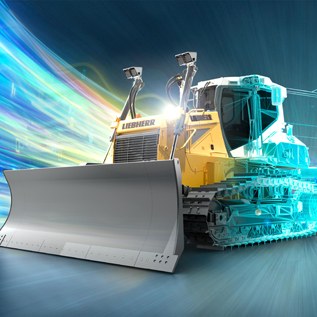Let’s dive into why machine control is the hot ticket in construction right now, thanks to a combo of digital advancements, emerging products, and big economic trends.
The 2023 State of the Industry Construction Technology Report tells us that contractors are already getting amongst connected equipment tech, and they’re planning to use it even more. About 13% of those surveyed are already using interconnected gear, and another 62% reckon it’ll be key for them in the next decade.

So, what connected equipment tech are these tradies using or planning to splash cash on? More of them are using machine control tech straight from their equipment OEM than aftermarket options from the likes of Trimble, Leica, Topcon, and others. Experts reckon the construction machine control sector will jump from $4.4 billion in 2022 to $5 billion in 2023, and then to $7.6 billion by 2027.
- Automation to Tackle Staff Shortages This growth isn’t just about new tech and products hitting the market. It’s also because machine control is a solid answer to a big headache in construction – finding enough staff. As of February 2023, contractors need to hire about 546,000 extra workers to meet this year’s demand, says Associated Builders and Contractors.
McKinsey’s research by Garo Hovnanian, Ryan Luby, and Shannon Peloq highlights that the Bipartisan Infrastructure Law is expected to create 3.2 million new jobs in nonresidential construction and its supply chain. But with a tight labor market, other sectors have seen productivity dips. Not great timing when there’s a surge in demand.
Tech that cuts down on the hours needed or the skill level required for projects is already making a difference. This includes not just automated machine operation but also equipment guidance products like Cat Assist.
An early study at the University of Southern Mississippi found that automated machine guidance offered:
- 66% time savings for grade checking
- 85% reduction in or elimination of staking
- 30-50% time savings through uninterrupted earthmoving
- 66% reduction in survey staffing and 100% increase in speed
- Equipment Guidance as a Stepping Stone Equipment guidance is bringing real labor and time-saving benefits, and more products are on the way. Some, like Trimble’s Siteworks Machine Guidance, can be upgraded later for more autonomy.
Jack Young from Trimble Civil Construction says, “This is machine guidance, not full automation. But it’s a stepping stone to more advanced tech. It’s buildable and not a dead end.”
This approach makes the tech more accessible, even for contractors with just one machine. Trimble and others are also offering it as a service, which might be more appealing for those cautious about investing big or wanting to try the tech without fully committing.
- More Autonomy and Robotics on the Horizon While equipment guidance is great on its own, tech that automates the business end of construction gear or even the steering is now mature and proven, especially for earthwork and paving.
Emerging tech is pushing the boundaries even further. Built Robotics, for example, is automating excavators for utility trenching in solar farms. They’ve also launched a robotic pile driver at CONEXPO.
Sarcos Technologies is another player in this space, focusing on supervised autonomy for repetitive tasks. They’ve got machines for grinding, spraying, hydroblasting, torque tooling, and surface prep.
- Underlying Tech Advancements Electrification is another big shift in construction gear, driven by environmental and sustainability goals. This could speed up the rollout of new machine control tech.
Electrification is changing the game, especially for lighter gear. It might lead to more efficient electromechanical actuators replacing hydraulics, which are smaller, lighter, and don’t need all the hydraulic kit.
Electromechanical actuators could first appear in lighter equipment due to their capacities. They offer more precise movement, which could make automated gear more accurate and easier for operators in tight spaces or complex tasks.
The Future of Autonomous Construction Gear While some companies are unleashing fully autonomous machines for specific tasks and others automate steering and production, the future could see gear that operates entirely on its own in more complex and dynamic job sites.
